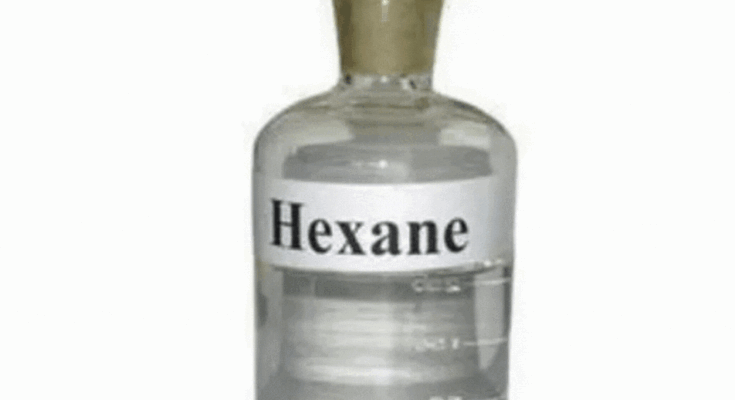Hexane is a widely preferred chemical for oil extraction from seeds and other oil-producing fruits, owing to its excellent solubilizing ability, high evaporation rate, low boiling point, easy oil recovery, and high yield. It is also used in dry cleaning, paint manufacturing, and the color printing of fabrics.
According to MarketsandMarkets, the hexane market is projected to reach USD 3,075 million by 2027 from USD 2,432 million in 2022, at a CAGR of 4.8%, during the forecast period. Steady demand from the edible oils market is driving the need for hexane. Moreover, the increase in demand for the solvent in the paints & coatings industry is increasing growth opportunities for the hexane market.
Download PDF Brochure: https://www.marketsandmarkets.com/pdfdownloadNew.asp?id=91763483
Food grade hexane is a non-volatile dearomatized fluid with a very low benzene content volume. It is a colorless and clear liquid with petroleum odor and sediment-free characteristics. Food grade hexane is produced from raw hexane feed using sulfolane as an extraction solvent to reduce the unsaturated content.
Pharmaceutical grade hexane is a high-purity grade of hexane that is available in purity levels as high as 99% with minimal impurities. In addition to high purity, pharmaceutical grade hexane has a low boiling point, low toxicity, minimal odor, and no poisonous fumes. The pharmaceutical grade hexane is, therefore, a commonly used solvent in the pharmaceutical & drug industry, where it is used for creating molds that are further utilized to produce tablet molds.
Key applications of Hexane in the extraction of food products and ingredients
| RAW MATERIAL | EXTRACTION SECTORS | END-USE INDUSTRY | APPLICATIONS |
| Oil seeds: soybean, rapeseed, sunflower, corn germ | § Crushing industry
§ Specialty oils extraction § Natural extracts production |
Animal Feed | Feed millers, premix |
| Specialty oilseeds: sesame, wheat germ, primrose, rice bran, perilla | Food | Meat alternatives, infant nutrition, edible oils, processed foods, colors | |
| Biofuel | Biodiesel | ||
| Technical | Paints & inks | ||
| Medicinal plants, algae, flowers, micro-organisms | Personal care | Perfumery, cosmetics | |
| Health care | Pharmaceuticals, nutraceuticals |
Source: Secondary Research, Primary Interviews, and MarketsandMarkets Analysis
Steady demand from the edible oils end-use is driving the growth of the hexane market
Hexane has a greater ability to extract oil when compared to other solvents, such as petroleum ether and ethyl acetate. Therefore, it is mainly used in the extraction of edible oils from vegetables and seeds, including soybean, mustard seed, cottonseed, rape seed, flax, groundnut, corn germ, safflower seed, and palm. It helps extract the maximum possible quantity of oil, while also eliminating undesirable odor from oil. The solvent is recyclable and can be reused after oil extraction. Particularly, food-grade hexane is utilized in oil extraction, owing to its efficiency and safety. It has a low boiling point, and the solvent retains its liquid state in cool temperatures. Hexane extracts oil from fruits, and seeds, without disturbing their nutritional value.
Hexane has become the predominant solvent for oilseed extraction due to its complete miscibility with oil, low boiling point, ease of recycling, and relatively low cost. This solvent has traditionally been used in the petroleum industry since 1930. Food-grade or oil-grade hexane is manufactured by purifying and extracting a hexane-rich stream from custom-cut naphtha to meet the specifications for an anticorrosive solvent.
Inquiry Before Buying: https://www.marketsandmarkets.com/Enquiry_Before_BuyingNew.asp?id=91763483
The above figure indicates that vegetable oil consumption is increasing worldwide. An increase in oil consumption is expected to drive the oil extraction process, thus driving the hexane market.
Asian countries have vast populations and growing economies, due to which, the demand for vegetable oil has increased significantly. For several of these countries, such as Indonesia, Thailand, Malaysia, and Singapore, this enormous consumption base is also increasing. Soybeans and palm oil dominate the Asia Pacific’s oilseeds and vegetable oils market. In order to extract edible/vegetable oils, such as those from cottonseed, groundnut, mustard, rapeseed, sesame, linseed, rice bran, soybean, and sunflower, hexane is one of the most preferred solvents. Thus, the growth in different markets in the region is expected to continue to boost the demand for hexane.



